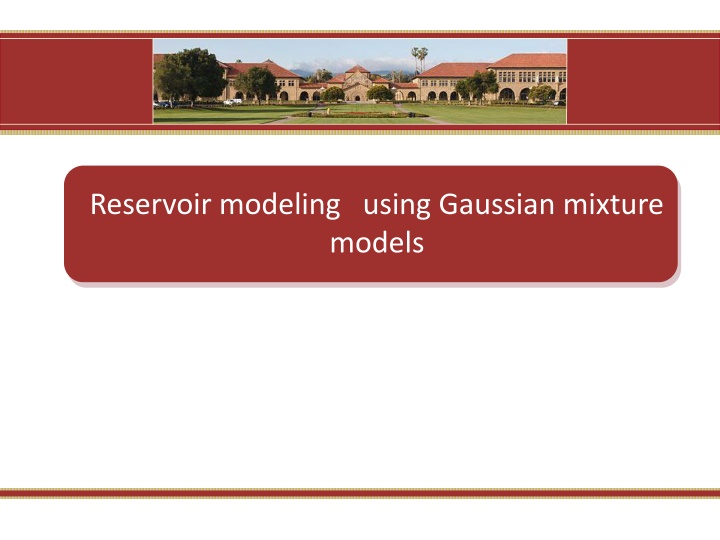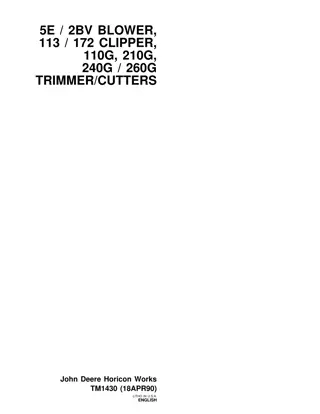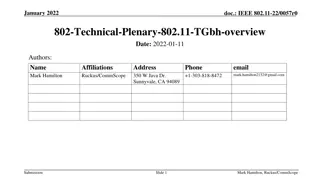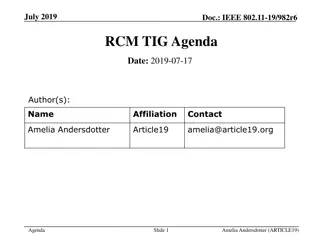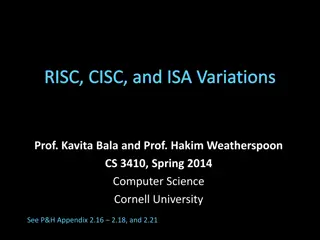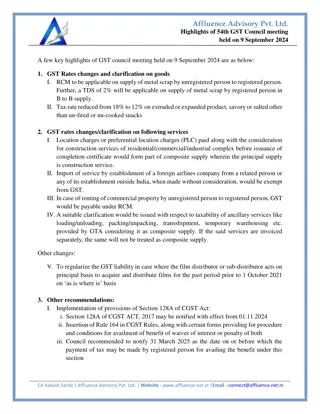Reservoir Modeling Using Gaussian Mixture Models
In the field of reservoir modeling, Gaussian mixture models offer a powerful approach to estimating rock properties such as porosity, sand/clay content, and saturations using seismic data. This analytical solution of the Bayesian linear inverse problem provides insights into modeling reservoir properties through a Gaussian mixture framework. By linearizing the seismic forward model and applying GM models, we can better understand the relationship between velocities and rock properties in reservoir characterization. The use of EM method for estimating weights, means, and covariance matrices further enhances the modeling accuracy for reservoir properties estimation and simulation.
Download Presentation

Please find below an Image/Link to download the presentation.
The content on the website is provided AS IS for your information and personal use only. It may not be sold, licensed, or shared on other websites without obtaining consent from the author.If you encounter any issues during the download, it is possible that the publisher has removed the file from their server.
You are allowed to download the files provided on this website for personal or commercial use, subject to the condition that they are used lawfully. All files are the property of their respective owners.
The content on the website is provided AS IS for your information and personal use only. It may not be sold, licensed, or shared on other websites without obtaining consent from the author.
E N D
Presentation Transcript
File:Stanford University May 7 2011 003.jpg Reservoir modeling using Gaussian mixture models
Introduction Many linear inverse problems are solved using a Bayesian approach assuming Gaussian distribution of the model. We show the analytical solution of the Bayesian linear inverse problem in the Gaussian mixture case. Some applications to reservoir modeling are presented (reservoir properties estimation and simulation) 2
Introduction In reservoir modeling we aim to model rock properties: porosity, sand/clay content, saturations. Rock properties cannot be directly measured away from the wells. The main source of information are seismic data. Seismic data Porosity Inverse problem 3
Introduction The seismic forward model can be linearized and the model linking velocities and rock properties is almost linear. Rock properties can be described by a Gaussian Mixture (GM) model. 4
Introduction Well data Sand content P-wave velocity (m/s) P-wave velocity (m/s) Porosity (v/v) Porosity (v/v) In traditional methods, when we observe a significant overlap in the prior distribution it is difficult to make a choice on the cut-off 4
Introduction The seismic forward model can be linearized and the model linking velocities and rock properties is almost linear. Rock properties can be described by a Gaussian Mixture (GM) model. The goal is to estimate reservoir properties as a solution of a Bayesian GM inverse problem. 4
Gaussian mixture models A random vector m is distributed according to a Gaussian Mixture Model (GMM) with L components when the probability density is given by: = 1 k L = m m ( f ) f ( ) k k where each single component is Gaussian: m = ( m ) ( m ) k k ( ) ( , ) f N k and the additional conditions L = = , 1 0 k k k 1 Example of 1D mixture with L=2 components (PDF and histogram of N random samples) 5
Gaussian mixture models L m ( m ) ( m ) k k Gaussian Mixture distribution m ~ ( ; , ) kN = 1 k Weights, means and covariance matrices estimated by EM method (Hastie, Tibshirani, Friedman, The Elements of Statistical Learning, 2009) 6
Linear inverse problems (Gaussian) Linear inverse problem = + d Gm N M M N N d m G , , : and R R R R R 7
Linear inverse problems (Gaussian) Linear inverse problem = + d Gm N M M N N d m G , , : and R R R R R m ~ ( , ) N If m m 0 ~ ( , ) N m d ~ ( , ) N then m d m d 7
